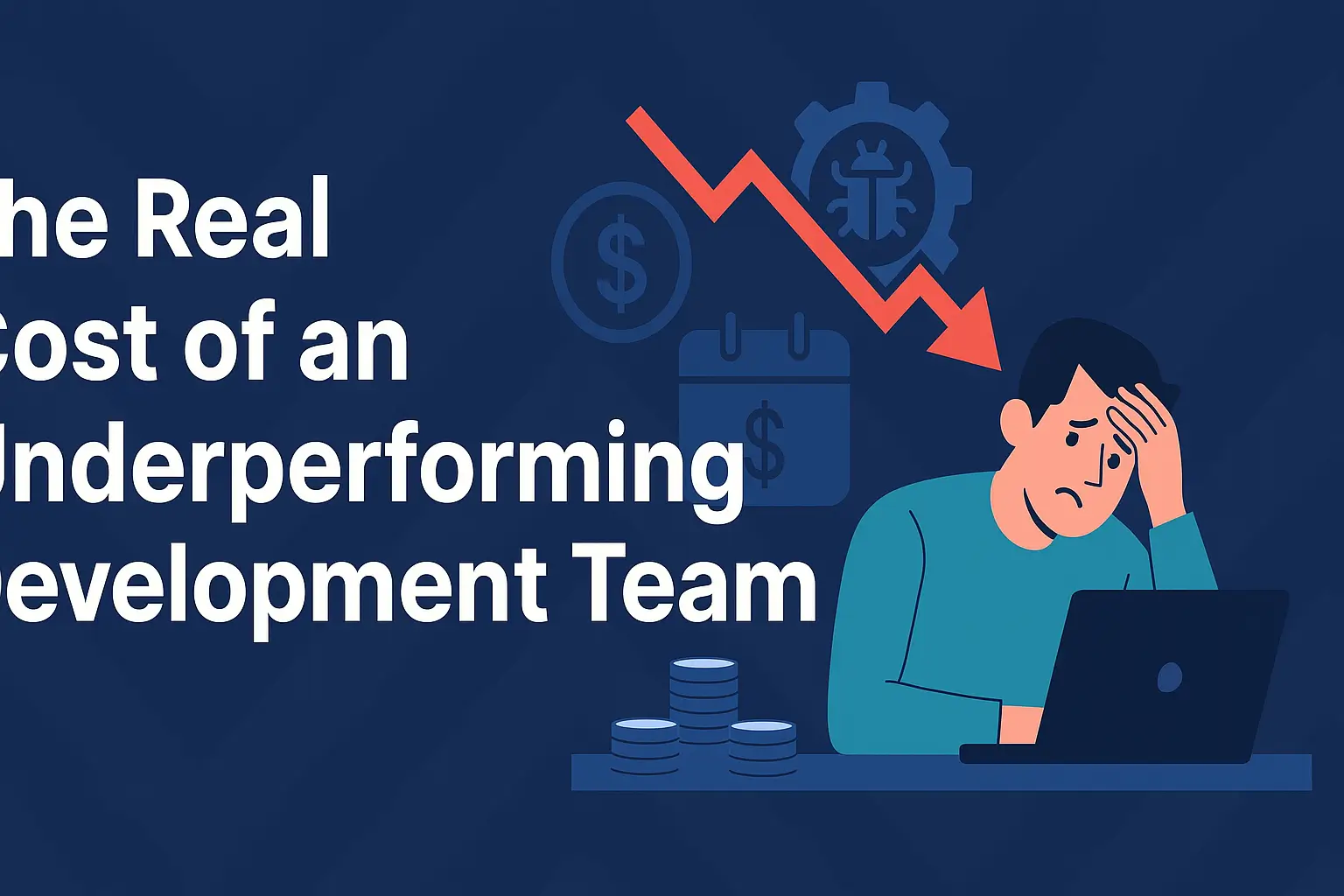The Real Cost of an Underperforming Development Team

🚨 Introduction: Why Development Team Performance Matters
In today's fast-paced digital world, engineering performance is directly tied to business success. A sluggish, inefficient, or disorganized development team doesn't just lead to late launches — it creates compounding business problems. From missed revenue to poor customer experience, the real cost of an underperforming development team is far greater than most realize.
In this article, we’ll cover:
- The top business costs caused by poor dev team performance
- Real-world examples of hidden inefficiencies
- ROI of investing in performance improvements
- How to turn your dev team from a bottleneck into a growth engine
🧨 Hidden Costs of a Poorly Performing Development Team
1. Missed Market Opportunities
Speed matters. In SaaS and tech, being first-to-market can make or break a product. When your team regularly misses deadlines or struggles to ship new features, you fall behind competitors — and your customers notice.
Example:
Imagine a product launch delayed by 2 months due to slow sprint cycles and unreviewed code. In that time, a competitor launches a similar feature and captures 10% of your target audience. That’s not just a missed opportunity — it’s revenue you may never recover.
What It Costs You:
- Lost market share
- Missed user acquisition
- Damaged brand credibility
2. Increased Bug Fix and Maintenance Costs
Underperforming teams often rush through code without thorough testing or quality control. This leads to higher defect rates, costly rework, and ongoing maintenance headaches.
The Hidden Cost:
Fixing bugs in production can be 5x to 30x more expensive than catching them during development. Poor performance creates a vicious cycle — the team is so busy fixing problems that they can't focus on innovation.
3. Wasted Man-Hours and Burnout
When processes are inefficient — long PR review times, unclear requirements, or slow builds — your team wastes valuable hours just waiting or firefighting. Not only does this drag down output, but it also increases developer frustration.
Outcomes:
- Reduced morale
- Higher employee turnover
- More resources spent on hiring and onboarding
4. Lack of Visibility and Accountability
Without engineering analytics, leaders can’t pinpoint what’s wrong. You end up making gut decisions, not data-driven ones. The result? Projects spiral out of control, and no one knows why until it’s too late.
Impact:
- Poor alignment between product and engineering
- Confusion over team priorities
- Delays that surprise everyone
5. Stunted Growth and Innovation
When you're stuck fixing yesterday’s issues, there’s no time for tomorrow’s ideas. High-performing engineering teams innovate — low-performing teams stagnate.
A Sluggish Team Means:
- Delayed roadmap execution
- Missed upsell/cross-sell opportunities
- Slower customer feedback loops
📈 Investing in Engineering Performance Pays Off
Improving developer productivity and team performance is not a cost — it’s an investment with measurable ROI.
Here's what you gain with better engineering analytics and workflows:
| Benefit | Description |
|---|---|
| Faster Time-to-Market | Deliver new features ahead of competitors. |
| Lower Maintenance Costs | Reduce bugs and downtime with better code quality. |
| Better Resource Allocation | Use real-time metrics to eliminate bottlenecks and reduce wasted effort. |
| Increased Developer Retention | Empowered teams feel more fulfilled and less burned out. |
| Higher Stakeholder Confidence | Transparent data builds trust across teams and executives. |
🔧 How to Improve Your Team’s Performance
Start with visibility and clear metrics. Tools like Tani.ai help you track essential engineering KPIs like:
- Cycle Time
- PR Review Time
- Deployment Frequency
- Lead Time for Changes
- Code Churn
From there:
- Identify bottlenecks
- Create data-driven feedback loops
- Reward outcomes, not just effort
- Invest in developer experience and tooling
- Set achievable, transparent goals
✅ Conclusion: Engineering Isn’t Just a Technical Department — It’s a Growth Lever
A slow or underperforming development team can silently bleed your business dry — not just in money, but in lost opportunities, trust, and momentum. But the flip side is powerful: with the right tools, processes, and leadership, you can turn your engineering team into a force multiplier for growth.